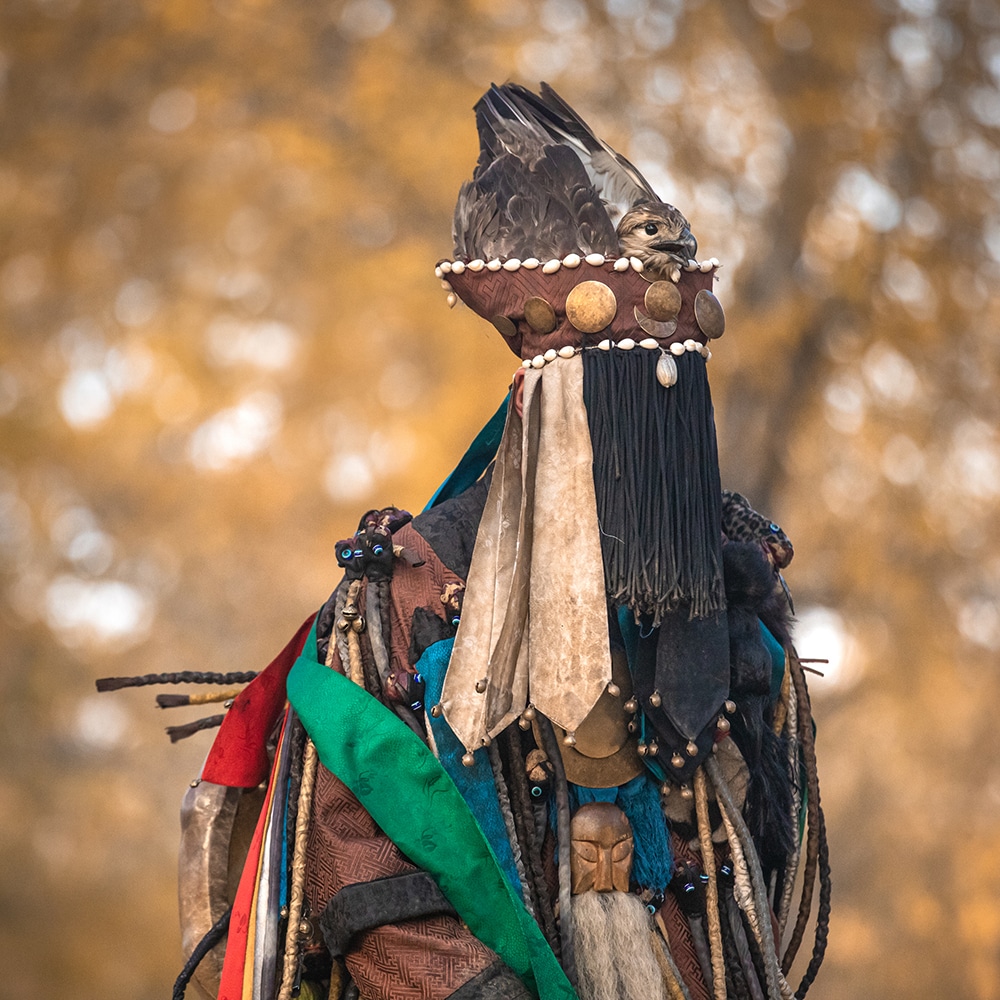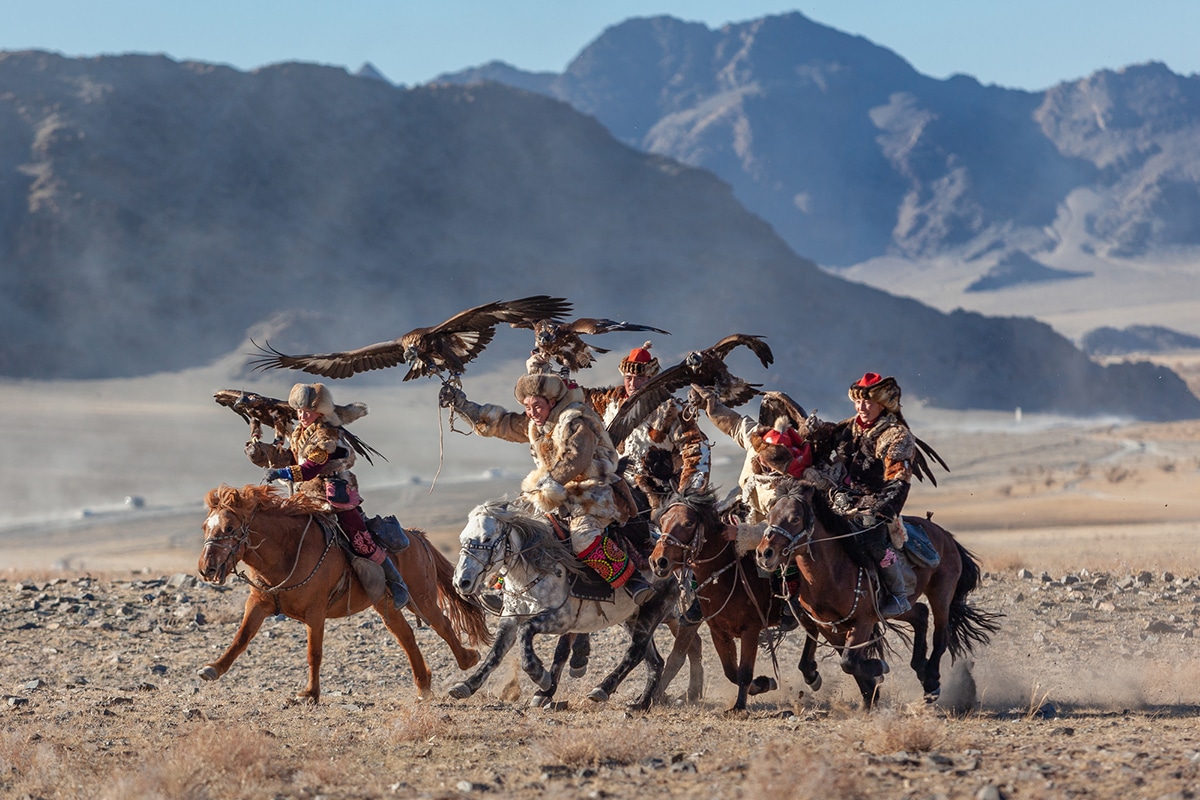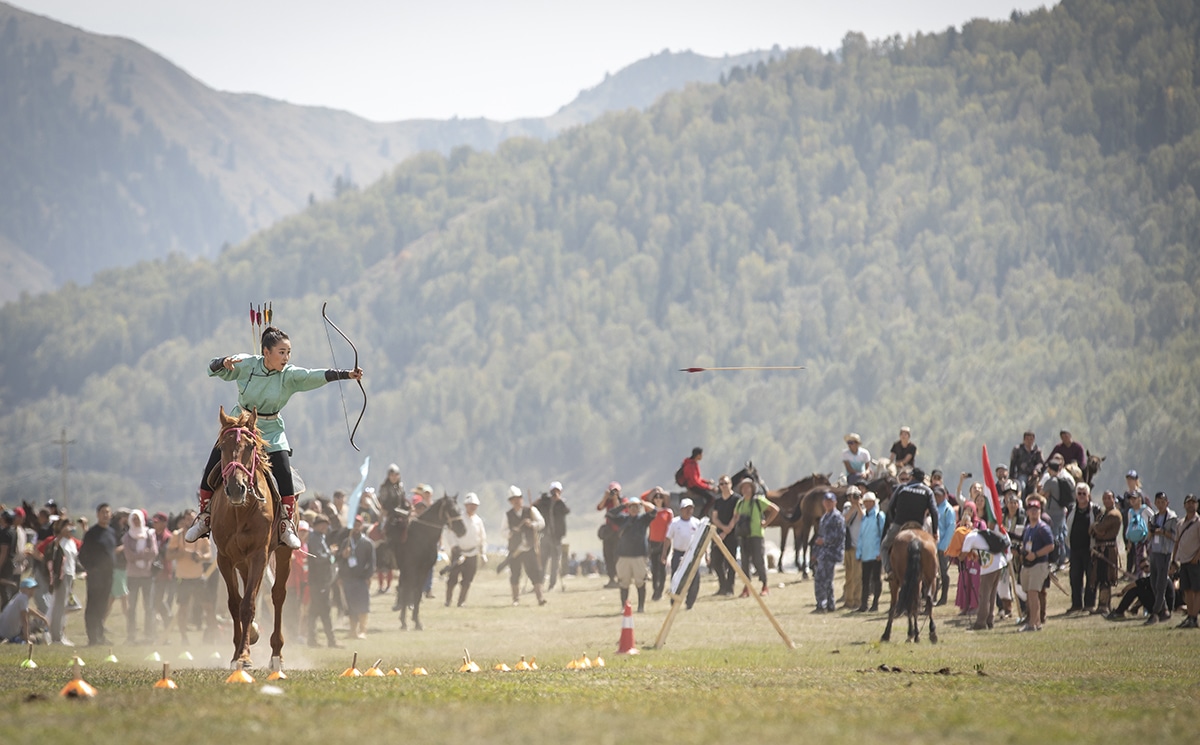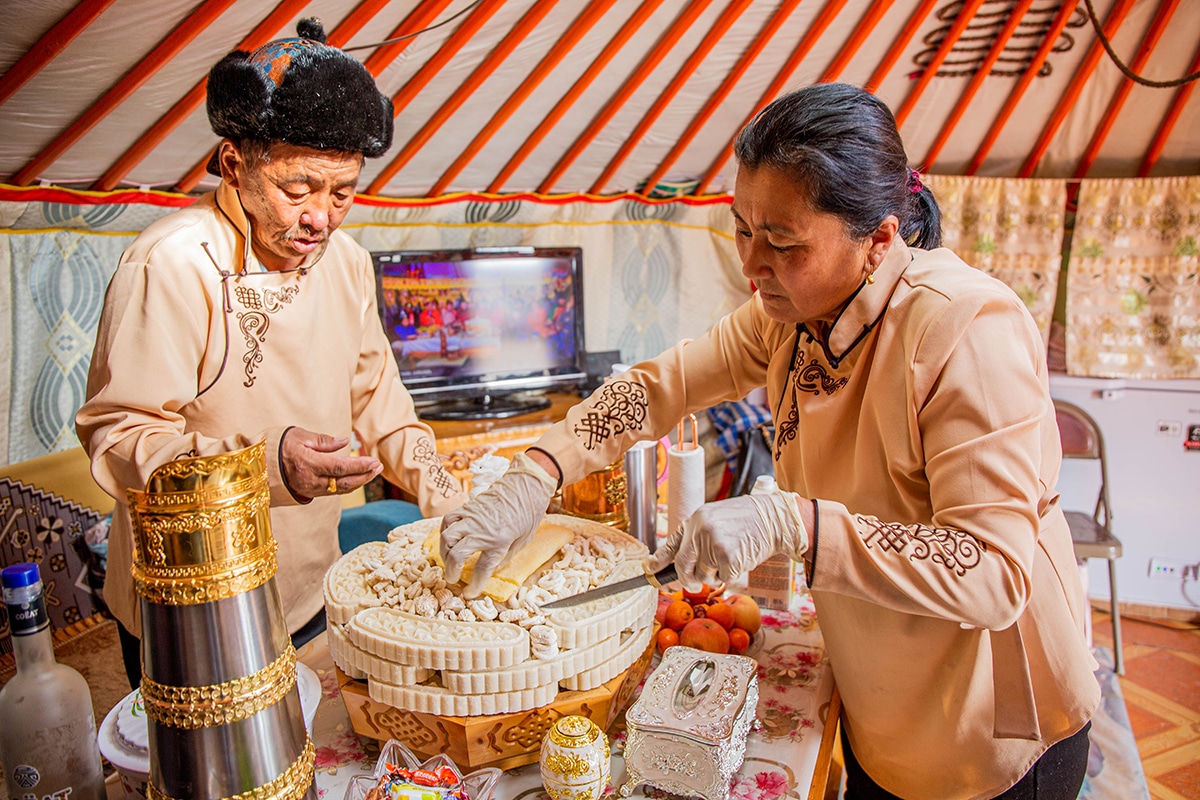Mongolian Shamanism: What to Know and How to Visit One
Everything you need to know about Mongolian Shamanism plus how to visit one when traveling in Mongolia.
Table of Contents
There are endless cultural and historic stones to overturn during a visit to Mongolia, but none may be quite as unique as the ancient practice of Shamanism. A practice full of rituals and tradition that have a huge impact on everyday life in Mongolia even today.
Visiting a Shaman is a serious spiritual undertaking for Mongolians, but foreigners can take part as well. Here’s everything you need to know about visiting a Shaman in Mongolia.
Mongolian Shamanism: Then and Now
Shamanism dates to the time of the Hun Empire between 300 and 400 BCE, making it one of the most ancient spiritual practices among modern humans.
Shamanism emphasizes the spirit that exists among all living things, places, and objects (like rivers and mountains), rather than focusing on a specific deity.
It’s the Shamans who then serve as mediums between the spirit world and the mortal plane. Once a Shaman channels a spirit, they are then able to offer guidance, advice, or even punishment for those seeking wisdom.
Today, Buddhism is the main religion practiced in Mongolia. But many Mongolians continue to seek the counsel of a spirit-channeling Shaman during times of strife or transition.
This may seem unfamiliar to Western-minded people raised to see religion as an all or nothing commitment, but there is no such mutual-exclusivity in Mongolian spirituality.
In fact, all over the Steppe you are likely to spy a teepee-shaped structure covered in blue strips of fabric called an ovoo tahilga. Originally shamanistic in nature, these structures now incorporate Buddhist qualities as well.
For today’s Mongolians, visiting a Shaman is a serious undertaking with sacred rituals and real-life consequences. If you are able to visit a Shaman in Mongolia, remember that it’s not a show or performance put on for entertainment, but a deeply rooted cultural experience. To be invited into a Shaman’s home is the highest honor possible and you should pay your respects accordingly.

What Makes Mongolian Shamanism Unique
Most Shamanistic practices are derived from animism, or the belief that objects, places, and creatures all possess a distinct spiritual essence.
It’s out of these beliefs, and a respect for nature, that Mongolian shamans are able to channel spirits. In doing this, they are able to provide advice, foretelling the future, and doling out direction for a more harmonious life.
Shamans are called to the profession, often identified by an elder mentor or someone in the community who can identify one’s spirit-channeling ability. They will then undergo extensive training to perform these sacred rituals and tasks while keeping a balance between the two universes.
In Mongolian Shamanism, an interpreter always accompanies the Shaman. This is usually the Shaman’s wife. It’s her who will then translate the Shaman’s ancient Mongolian tongue he’s speaking into modern Mongolian.
If you don’t speak Mongolian, you’ll then need a second interpreter to help make this process go smoothly. The Shaman will address you privately, asking questions, and telling you things about your life that you’d never expect. Having an interpreter is a key part of this experience and getting the most out of your visit.
Mongolian Shaman Clothing
Mongolian Shamans don very specific garb, which is unlike the clothing of Shamans anywhere else in the world.
It includes a deel, the traditional Mongolian robe most nomadic herder’s wear. However, a Shaman’s deel will look completely different. A Shaman’s deel will be covered in snakes or wolf pelts or other sacred items. They’ll wear a feathered hat with a face cover and traditional Mongolian boots.
The Shaman will also beat a goat skin drum with a drumstick to conjure the spirits. Collectively, the outfit makes the Shaman appear quite mystical and ancient, truly embodying the ancestral spirit coming through him.
Shamans from other cultures may provide a calming or peaceful experience, but don’t expect that here. Mongolian Shamans can be quite intense, depending on which spirit is embodying them, and even visitors aren’t exempt from being whipped as punishment or to remove dark curses.

Am I supposed to bring a gift for the Shaman?
Yes, bringing a small gift is always expected when you enter anyone’s home in Mongolia. Shaman or not.
Following your session with the Shaman, it’s also appropriate to leave an offering of some kind. This is typically money. An appropriate amount to leave on the alter of the Shaman after receiving his advice is 10,000 to 20,000 Tugriks.
Arranging a Shaman Visit
Arranging a visit to a Shaman is not a typical thing tourists are interested, or even invited, to do.
It takes a traveler with a curious kind of soul to be open to this experience, and for the opportunity to visit a Shaman to present itself. And often times, it doesn’t.
While there are dedicated tours online, as well as a Shaman festival in Ulaanbaatar every May or June, the best way to arrange a visit is through a local. Whether that be a local friend, local guide, local fixer, or other, locals are always in the know about which Shamans are the real deal, and which aren’t.
They’ll also be able to help you navigate the experience, which isn’t always straight forward.
Even when you do work with a local to arrange a visit, there’s no guarantee the Shaman will see you. A Shaman doesn’t hold a Spirit ceremony until nighttime, usually no earlier than 10 or 11 pm. These ceremonies can then last for hours, going on until the early hours of the morning.
Even then, after you agree on a date and time for a visit, there’s still the possibility the Shaman, or the Spirits, change their minds. The uncertainty only adds to the mystique.
Additionally, it’s important to know that once a ceremony starts, there’s no leaving until the ceremony is over. No matter what you see, and no matter what happens, once a ceremony has begun, you’ve committed to seeing it through. For better or for worse.
As with much of Mongolia, it’s best to leave flexibility in your schedule for these things. Especially if this is something you don’t want to leave without experiencing.
What Happens When You See a Mongolian Shaman?
When planning to visit a Shaman, come prepared by knowing your Chinese Zodiac according to the Chinese lunar calendar. Ox, rat, tiger, monkey, rooster, each animal holds a significance in these ceremonies.
You should also have one very specific question channeling through you. Maybe you want to know about your job or your marriage. Come with a question you want answered and be specific.
If at any time during the ceremony, you feel the urge to take a photo, just don’t. It’s disrespectful to the Shaman and the local who helped you arrange this visit. I recommend not bringing your cell phone on your visit.
Before the Shaman can call to the Spirits, women will be asked to remove their earrings and to take out any hair bands and leave their hair down. You have to stay like this throughout the entire ceremony.
The Shaman will then begin to call to the Spirits through dancing, singing, and using his specifically tuned drum. Once he enters a noticeable state of trance, that means the Spirit has embodied him.
Spirits may be warriors, family members, or strangers from the past. They can be good and they can also be bad. Don’t be alarmed is the Spirit is dark.
When the Shaman summons you, sit on your knees before him, with your feet facing away from him. Don’t sit with crossed legs.
He may grab your hand, or hold your head, or not touch you at all. He may begin by telling you things you never intended him to know, or he may ask why you’ve come to see him. No matter what happens, don’t be surprised when the spirit is able to pinpoint aspects of your life you’ve never spoken aloud.
Visiting a Shaman can be an intense experience, so be prepared for anything.
Shamans typically only see members of their local community, and they do so on an ongoing basis. Don’t be disappointed if he is unable to resolve your question to the fullest degree, these questions often take time for him to get to the root of. If it was so easy to answer some of these things for yourself, you wouldn’t have needed to even see him in the first place!
The best approach to Mongolian Shamanism is to go into it with an open mind, a flexible schedule, and an appreciation that these ancient practices have survived through so many generations to be experienced today.

Ali Wunderman
Ali Wunderman is a freelance travel writer focusing on the intersection of wildlife and tourism while illuminating underrepresented destinations. Her work has appeared in Travel + Leisure, TIME Magazine, Condé Nast Traveler, and Cosmopolitan, among others. She is also the author of Frommer’s Belize guidebook, a contributing author for Frommer’s Iceland, and founder of The Naturalist. Originally from San Francisco, Ali now has a home base in Montana so she can visit Yellowstone National Park any time.
Prepare for your Trip:
Join my Private Travel Group on Facebook
Proudly Based in Ulaanbaatar, Mongolia
© 2024 Meanwhile in Mongolia






